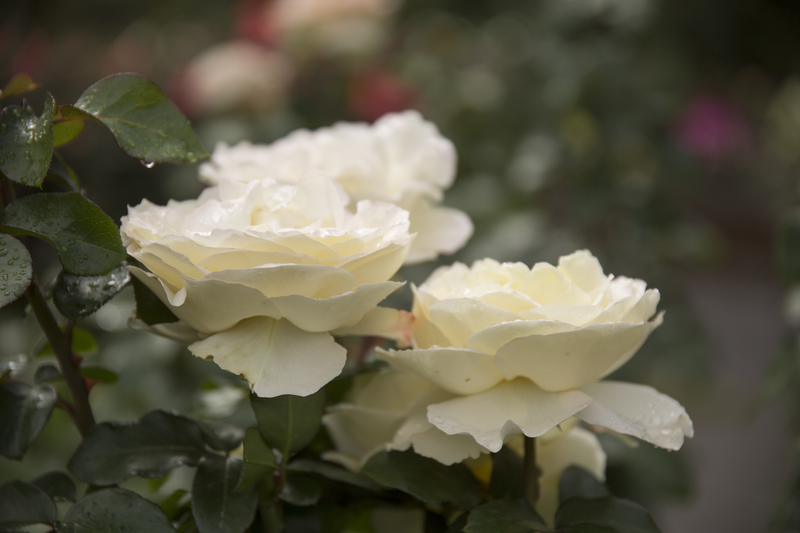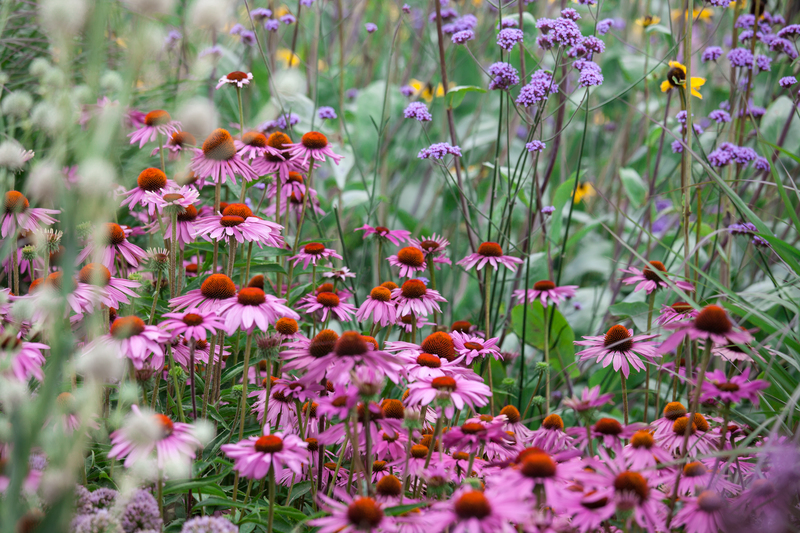Building a Safe and Fun Outdoor Area for Children
Posted on 02/10/2025
Building a Safe and Fun Outdoor Area for Children: The Complete Guide
Creating a secure and enjoyable outdoor space for your kids is one of the most rewarding investments you can make for your family. A well-designed backyard or playground fosters physical activity, sparks imagination, and nurtures social skills while ensuring your children's health and safety. In this comprehensive article, we'll walk you through how to build a safe and fun outdoor area for children, from planning and layout to essential safety measures, creative play ideas, and maintenance tips.

Why Safe and Fun Outdoor Spaces Matter for Children
Before diving into the "how-to" of creating a child-friendly backyard, let's explore why it's crucial to get this right:
- Physical Development: Outdoor activities help children improve motor skills, coordination, and overall fitness.
- Mental Well-being: Stimulating outdoor environments reduce stress and increase happiness, aiding cognitive and emotional growth.
- Social Interaction: Safe play areas encourage group play, sharing, and teamwork.
- Imagination and Creativity: Nature and play structures spark creativity and independent thinking.
The Benefits of Outdoor Play
Child-safe outdoor areas go beyond physical safety--they provide opportunities for experiential learning and adventure. Whether it's sandbox construction or imaginative role-play in a playhouse, an inspiring setting leads to hours of meaningful play. The right outdoor environment can become your child's favorite "room" in the house.
Step 1: Assessing Your Outdoor Space
Every backyard or yard is unique. Start by carefully assessing the space you have available, considering these key factors for family backyard safety:
- Size and Shape: Measure the area and note any slopes, uneven ground, or obstacles.
- Sunlight and Shade: Observe which parts get direct sun, partial shade, or are protected by trees.
- Proximity to Hazards: Identify nearby streets, pools, pets, or water features that may require extra boundaries.
- Access Points: Decide on gates, fences, and child-safe entry points to the area.
Planning Your Layout
Draw a rough sketch or use free online design tools to visualize zones--such as play, gardening, relaxation, and sports. Designate safe pathways and clear sightlines so supervising parents can easily monitor activities from the home or patio.
Step 2: Safety First--How to Create a Secure Outdoor Play Area
When it comes to making a safe outdoor play area for kids, you can never be too diligent. Be proactive by following these essential steps:
Install Fencing and Boundaries
- Sturdy Fence: Choose a child-proof fence at least 4-6 feet high, with self-closing, self-latching gates.
- Gaps and Openings: Ensure there are no gaps larger than 4 inches to prevent children from squeezing through.
- Lockable Gates: Install locks out of reach for small children.
Childproof Natural Hazards
- Plants: Avoid toxic plants and prickly shrubs. Use soft, non-toxic varieties suitable for small children.
- Pools and Water: Always install barriers around pools, fishponds, or fountains and use pool alarms and safety covers.
- Sharp Edges and Drop-offs: Level uneven ground and pad or cover stone or concrete edges.
- Check for Bugs and Wildlife: Regularly inspect for bees, wasps, and ant nests. Seal compost bins and trash cans securely.
Outdoor Surface Safety
Choose soft, impact-absorbing materials--such as engineered wood chips, rubber mulch, or synthetic turf--under and around play equipment. These can reduce injuries from falls. Grass is a decent option, but it can become slippery or bare quickly.
Safe Equipment Placement
- Keep playsets, swings, and slides away from hard surfaces, fences, and overhanging branches.
- Allow for at least a 6-foot safety perimeter around each piece of equipment.
- Secure structures firmly to the ground to prevent tipping or wobbling.
Supervision is Key
No amount of baby-proofing replaces responsible supervision. Design sightlines so adults can easily watch over kids of varying ages during outdoor play.
Step 3: Choosing Fun and Age-Appropriate Outdoor Play Equipment
After ensuring safety, it's time to maximize fun in your outdoor play space. The best backyard for children offers a variety of activities that nurture growth through play.
Popular Play Structures
- Swings and Slides: Classic, versatile, and available for all age groups. Look for smooth, pinch-free designs made of weather-resistant materials.
- Climbing Frames: Monkey bars, ropes, and climbing walls develop strength and confidence.
- Sandpits and Water Tables: Ideal for tactile development and imagination-led play.
- Trampolines: Provide excellent exercise, but always fit a safety enclosure and monitor use closely.
- Playhouses and Tents: Spark hours of role-play and adventure while offering shelter from the sun.
- Balance Beams and Stepping Stones: Encourage balance and agility, and are easy to DIY.
Sports and Activity Zones
Segment your space to include sports nets, putting greens, mini basketball hoops, or an obstacle course. Adapt activities to your children's interests and ages for lasting engagement.
Sensory and Nature Features
- Create a child-safe garden with pollinator flowers or edible plants for hands-on learning.
- Install a mud kitchen for messy, creative mixing and role-play.
- Add a music wall (with chimes, pots, and pans) for auditory fun.
- Incorporate smooth, winding paths for scooters and bikes.
Step 4: Sun Protection and All-Weather Comfort
Outdoor safety for children means thoughtful sun and weather management. To keep your backyard play area safe and comfortable year-round:
- Shade Sails and Pergolas: Use UV-protective fabrics or structures to block harsh midday sun from play areas.
- Trees and Hedges: Plant fast-growing, non-toxic trees for natural shade and cooling.
- Covered Seating Areas: Provide shaded benches or picnic tables for breaks and snacks.
- Mist Sprayers or Fans: For hot climates, consider cooling accessories for summer months.
- Weatherproof Equipments: Choose play equipment and furniture that can withstand rain, humidity, and sun to ensure safety and longevity.
- Rainy Day Solutions: Use waterproof outdoor storage for toys and install drainage systems to avoid puddles or slippery surfaces.
Step 5: Safety Maintenance and Regular Checks
A safe and fun outdoor area for children isn't "set and forget." Ongoing maintenance ensures lasting safety and enjoyment.
- Monthly Inspections:
- Check for loose bolts, splinters, cracks, or wear on all equipment.
- Look for gaps, rust, or broken parts on fences and gates.
- Inspect ground cover for balding, compaction, or foreign objects.
- Daily Visual Checks:
- Remove any sharp debris, animal waste, or fallen branches before play.
- Survey sandpits or water features for insects, algae, or unsafe conditions.
- Seasonal Updates:
- Wash and disinfect surfaces, replace worn mulch, and repaint faded structures to maintain safety and appeal.
First Aid and Emergencies
Keep a first aid kit in easy reach of your outdoor play area and display emergency numbers. Teach children about safe play and what to do if they need help.
Step 6: Involve Your Children in the Process
Not only does including your kids in designing their outdoor space help personalize it, but it also increases their respect for the area and safety rules. Ask for their input on theme, color, or favorite activities when selecting play equipment or layout.
- Let them help plant a garden or pick flowers.
- Engage in painting stepping stones or decorating playhouse walls.
- Explain the importance of following safety guidelines during each activity.
Step 7: Affordable and DIY Outdoor Play Area Ideas
You don't need a huge budget to build a fun and safe backyard for kids. Many features can be created with a little creativity and effort!
- Pallet Playhouses: Construct small forts or houses from recycled wood pallets.
- Tire Swings and Climbing Towers: Upcycle old tires, ropes, and wood for robust play equipment.
- DIY Chalk Walls: Paint part of a fence or wall with chalkboard paint for open-ended art play.
- Nature Trails: Use logs, stones, and wood chips for an adventure path.
- Recycled Musical Instruments: Attach pots, pans, and tubes to a fence for a unique sound garden.
Tips for Budget-Friendly Safety
- Source secondhand playsets but always inspect and refurbish for safety.
- Choose multipurpose equipment to maximize value and minimize clutter.
- Partner with neighbors or local community groups for larger shared features.
Step 8: Encouraging Outdoor Play Year-Round
Outdoor play areas for children should be inviting in every season. Keep things interesting with:
- Rotating toys, sports, and equipment to match the season.
- Adding festive lights or decorations for holidays.
- Hosting seasonal scavenger hunts or backyard games for friends and family.
- Building birdhouses, bug hotels, or wildlife feeders to nurture curiosity about nature.

In Summary: Making Your Backyard a Safe and Exciting Oasis for Kids
Building a safe and fun outdoor area for children is about balancing adventure and security. Thoughtful planning, ongoing supervision, and creative enhancements can transform any yard--big or small--into the ultimate playground.
- Start with safety: fencing, secure equipment, and soft surfaces.
- Prioritize fun through age-appropriate toys, sports, and sensory features.
- Protect kids from sun, insects, and weather extremes.
- Maintain regularly and refresh activities with the seasons.
- Involve your kids for a truly personalized, cherished space.
Whether you dream of a classic swing set, a modern adventure zone, or a whimsical garden escape, your efforts to create a secure, stimulating, and enjoyable backyard will pay lifelong dividends in your children's happiness and growth.
Frequently Asked Questions About Safe Outdoor Spaces for Children
- How do I ensure my backyard is safe for young children?
Invest in fencing, soft surfaces, childproofed equipment, and regular maintenance. Always supervise outdoor play. - What materials are best for playground surfaces?
Engineered wood fiber, rubber mulch, and synthetic turf are best for cushioning falls and preventing injuries. - How do I keep my backyard fun for different ages?
Offer a mix of open spaces, adjustable sports areas, and sensory or creative play zones for all ages. - How often should I inspect and maintain the play area?
Perform quick daily checks plus thorough monthly and seasonal inspections. - How can I add shade to a backyard without trees?
Use shade sails, pergolas, or large umbrellas for instant sun protection over play and seating areas.
Ready to Build the Perfect Outdoor Area for Your Family?
Start today and watch your children grow, laugh, and play in a safe and inspiring space built just for them!

